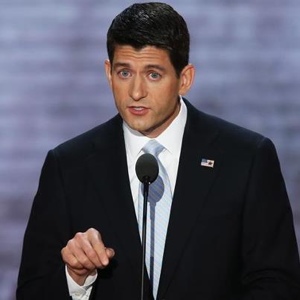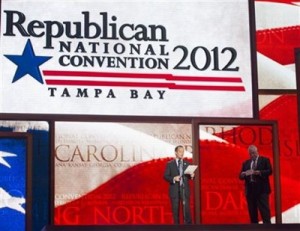President Obama has come out swinging for “net neutrality” as his first post-midterm initiative. While on the surface the concept of “net neutrality” seems like a wonderful idea—who isn’t for a level playing field? It is when you get into the details of what “net neutrality” really means and how it is to be implemented that reality intrudes.

Network neutrality may sound good in theory, but it is a Trojan Horse for government control over the internet.
What President Obama means by “net neutrality” is to regulate internet providers as “public utilities” under Title II of the Telecommunications Act rather than as an “information service” under Title I of the Act. This may seem like a completely uninteresting change, but it means that internet providers would be under a radically different landscape. It would allow the government to regulate essentially every part of your internet provide, right down to the rates they charge. While President Obama has said that the FCC would not go so far as to regulate the rates your ISP can charge, that promise is only as good as the other promises that this President has made and broken.
So why should you oppose Obama’s approach to “net neutrality?” For one, it’s a solution in search of a problem. Advocates of net neutrality paint a picture of a world in which ISPs charge you extra for certain sites and make you pay extra for YouTube or Netflix or certain sites. This picture is simply not realistic. There is little to nothing preventing ISPs from doing that now, and none of them have done so. If they did, the backlash would be enormous. The reason why ISPs have not gone to a tiered system is because it’s technologically difficult and offers little benefit. That isn’t going to change—in fact, in an open marketplace it would be even dumber for an ISP to do that because consumers would have plenty of other options. If you don’t like what Comcast does, you can switch to DSL, satellite, or wireless services. As I’ll discuss later on, consumer choice, not government regulation, is the better path forward.
The other reason is that heavily-regulated industries are not consumer friendly. The internet depends on rapid innovation. A three-letter government agency like the FCC is about as far away from innovative as you can get. Andy Kessler outlines how the FCC stifled the development of major telecommunications technologies in the past due to overregulation and regulatory capture. Right now most broadband internet is delivered through cable or DSL—but wireless internet is growing in popularity. Cellular networks, satellite networks, and future technologies like Google’s Project Loon are changing the way we get broadband internet. If the FCC tries to fit these new technologies (or technologies we haven’t even invented yet) into their old-world regulatory framework bad results will happen. Would Google Fiber exist if Google had to climb through miles of red tape just to get started? No, even a hugely profitable company like Google would say it just wasn’t worth it. Would the next method of high-speed internet appear in a heavily regulated market? Forget it–because when you have a heavily-regulated market the playing field does not become equal, it becomes the exclusive playing field of the big boys who can use political power and lobbying to tilt the rules in their favor.
While President Obama says that ISPs should not be allowed to “block” or “throttle” content, that ties the hands of ISPs to regulate quality on their network. If the teenager next door to you starts flooding your upstream internet connection by downloading gigabyte after gigabyte of data and streaming multiple 4K movies, it would make sense for the ISP to throttle that user. He’s degrading service for others, and that’s a problem. But Obama’s proposed net neutrality rules would leave ISPs virtually powerless to make common-sense moves that are designed to improve network quality. Trying to regulate just when and how a provider could throttle would mean another several-thousand page stack of regulations that just makes the situation harder. President Obama’s bright-line rules may not always work so well in practice.
Finally, a more heavily-regulated internet makes it easier to start clamping down on speech that the President doesn’t like: regulation under Title II makes it easier for the FCC to start regulating content as well as carriage. In this case, net neutrality is the proverbial camel’s nose under the tent. Once regulated as a public utility, the FCC has virtually unfettered discretion to change how ISPs do business. Want a low-cost, low-speed, but high-reliability service for a small business? Too bad, because the FCC will tell your ISP what they can and cannot offer. This is what Ted Cruz inarticulately warned about with his comparison to Obamacare. When government rights the rules, the rules become one-size-fits-all and consumers suffer.
Some of what the President proscribes in not bad. For instance, ISPs should report when and how they are shaping traffic. Markets need a certain level of transparency, and government can create narrowly-tailored and clear rules to provide market transparency. But even this must be done carefully. Even rules designed to promote transparency can be twisted to stifle legitimate competition.
If regulating ISPs as a “public utility” is such a bad idea, why is President Obama pushing it? There are several possible explanations. The first is that net neutrality is a popular cause among major Democratic campaign contributors like Google, Apple, and Facebook. The second is that it’s a technical issue that the public doesn’t understand, and if Obama wins on it, he can spin it to make it look like a political win for himself—by the time the rules are implemented, Obama will be out of office.
What is a better way of dealing with this situation? Instead of regulating ISPs under Title I, the FCC should butt out. There is not a problem with networks blocking content or throttling content (except when you go over a data allotment, which is a content-neutral restriction). Unless and until there is a problem that’s worthy of sweeping regulation, it’s better to leave the system where it is. Instead of proposing a top-down, one-size-fits-all solution written from on high, the internet should be allowed to continue in the same way its prospered: by developing its own rules of the road.
The internet went from being a little-known and seldom-used academic and defense network to being the way billions across the world connect. This happened because the FCC and other regulatory agencies took a light hand in regulating this new form of communication. While on the surface “net neutrality” sounds good in principle, it is when you get to the harder questions that it becomes clear than regulating the internet would stifle its continued growth and development.




